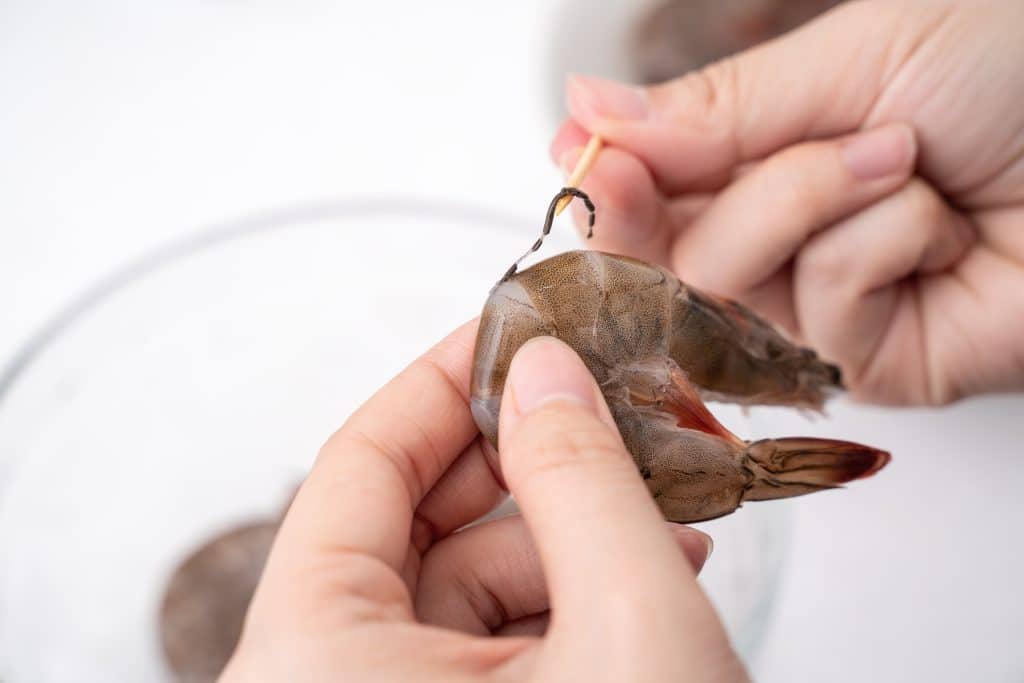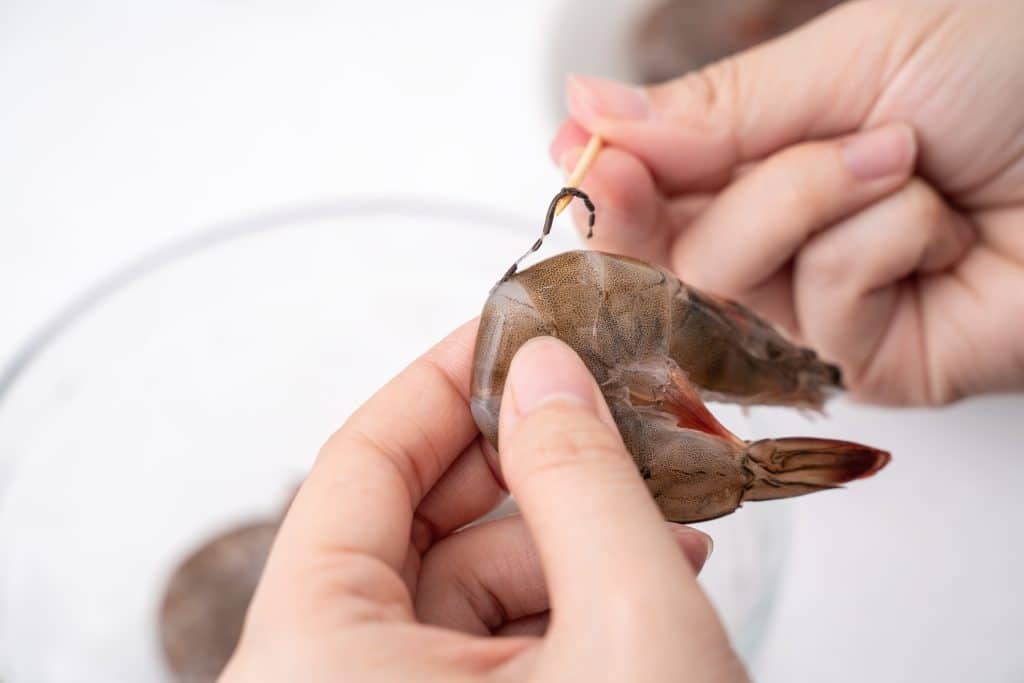Shrimp, these delights of the sea, are often enjoyed for their delicate flavor and versatility in the kitchen. However, while preparing them, you may have noticed a fine black line running along their backs. But what is this mysterious black line? Is it safe? Should it be removed before enjoying these crustaceans? Let’s dive into this topic to clarify these questions…
The Nature Of The Black Line: The Digestive Tract Of The Shrimp
This visible black line on the back of shrimp is actually their digestive tract, sometimes referred to as a “vein.” Contrary to what the term might suggest, it is not a blood vessel, but rather the intestine of the shrimp. This tube contains the remnants of what the shrimp has consumed, including sand particles, organic debris, and other items found in their natural environment.
Culinary And Taste Implications: Why Consider Removing It?
Although the digestive tract is not harmful to human health, its presence can influence the culinary experience. Indeed, leaving this “vein” can impart a slightly gritty texture in the mouth, due to the sand particles it may contain. Additionally, it can impart a bitter or earthy taste to the delicate flesh of the shrimp, altering the enjoyment of the dish.
For these reasons, many chefs and cooking enthusiasts prefer to remove this part before cooking or consumption, especially if the shrimp is intended to be eaten raw, as in ceviches or sushi.
Techniques For Removing The Digestive Tract: Simplicity And Effectiveness
Fortunately, removing this black line is a simple operation that does not require sophisticated tools. Here’s a commonly used method:
-
Peel The Shrimp: Start by removing the head, legs, and shell, optionally leaving the tail for aesthetic presentation.
-
Incise The Back: Using a small, sharp knife or toothpick, make a light incision along the back of the shrimp where the black line is located.
-
Extract The Digestive Tract: Gently lift and pull the black vein to extract it completely. If it breaks, repeat the process to remove any remaining segments.
This technique ensures that the shrimp is prepared for optimal texture and flavor, guaranteeing a delightful culinary experience.
Is It Necessary To Always Devein Shrimp? A Matter Of Personal Preference
Interestingly, not all shrimp require this operation. In some culinary cultures, particularly in Asia, shrimp are often consumed with their digestive tract intact, and this does not typically pose a problem. Furthermore, on small shrimp, the vein is often barely visible and hardly perceptible in the mouth. Thus, the decision to remove this part largely depends on individual preferences and culinary traditions.
A Small Precaution For Great Taste
In summary, while the black line on the back of shrimp poses no health risk, removing it can enhance the texture and flavor of your culinary preparations. This simple and quick step allows you to fully enjoy the delicacy of shrimp flesh without any interference from unwanted flavors or textures. So, during your next shrimp preparation, don’t hesitate to take a few minutes for this operation: your taste buds will thank you.


